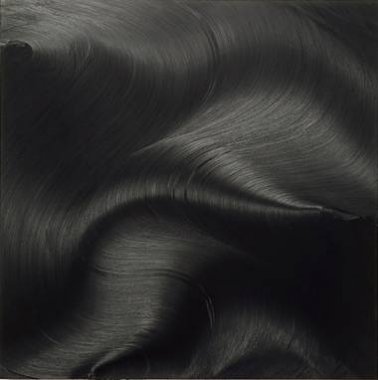March 21 - May 17 2009 the Peggy Guggenheim Collection presents Themes and Variations: From the
Mark to Zero, curated by Luca Massimo Barbero. This exhibition draws upon the museum’s permanent
collections from the early 20th century to the post World War II period, enriched by loans from other
collections. It charts the progress of the pictorial mark chronologically and thematically: from typography
to collage, from letters to numbers, to the iteration of gesture, of signs, eventually sublimating into
monochrome, beyond which the only possible condition is the void. As a ‘variation’ of this theme, the
exhibition includes a one-man show of painting by British artist Jason Martin. Martin, one of the most
creative young British artists of his generation, has been invited to interpret grade zero with a series of
canvases specifically created for this exhibition. From the Mark to Zero benefits from the support of the
Regione del Veneto.
Themes and Variations is a novel curatorial concept inaugurated by the Peggy Guggenheim Collection in
2002 with a series of three exhibitions focusing on postwar art. Over a period of six months Luca Massimo
Barbero curated changing installations and monographic rooms. Then and now the underlying ambition of
the project is to increase our understanding of specific works in the Peggy Guggenheim Collection by
placing them in a historical context and by setting up a dialogue with painting, sculpture and installations
from other collections. Within the same rooms, masterpieces from the early 20th century avant-garde ‘rub
shoulders’ thematically with works from the postwar, blurring the boundaries separating ‘modern’ and
‘contemporary’ and revealing the evolutions of the sign through new expressive forms.
Works of Cubism, Futurism, Dada and Surrealism: within the radical experimentation of this explosive
period, letters, numbers and the printed word participate as full players in the creative process—plucked
from the real world, manipulated and then rendered with their original linguistic and communicative
dimensions still intact. From Interventionist Demonstration by Carrà, to Merzbild by Schwitters, and
Pharmacy by Cornell, to the new grammars of a similar language in the 50s by Rotella and Spoerri, the
printed word structures and defines images but with a resonance that convulses the visual syntax. On the
one hand language dialogues with matière and image, as in Braque’s multi-media works and the collages of
Gris; on the other, the grid laid down by Mondrian’s repetitive marks creates the new space of
Vantongerloo’s Neoplasticism, which in turn nourishes the minimal precision of John McCracken. Basic
units of language evocatively colonize the surfaces of works by Tunnard, Licini and Bonfanti to the point
they become mute writing. Sometimes the act of painting transforms into a form of scripture, on canvas or
any other support, as in the works of Scanavino, Novelli, Mirko, and Pomodoro; at other times, artists
investigate the foundations and responsiveness of different visual codes, such as in Manzoni’s Alphabets or
Imprints, in Griffa’s lines, in the neon-lit phrases of Merz and Nannucci, Holzer’s benches and drawings by
Tremlett.
Writing is also geometry, from Albers’ and Nigro’s primary elements to advanced research into visual
perception by Morellet, Nangeroni, and Vasarely, down to the experiments of Gruppo Zero and kinetic
art. The mark is also color, rendered in the lyrical, intermittent and visionary spaces of Tancredi, Tobey,
Accardi, Dorazio, Ciussi, and Aricò. Elsewhere script and writing merge in an abstract and symbolic
punctuation, expressed in apostrophes and dots that may visually or physically violate the support itself,
with holes and cuts, as in the canvases of Fontana, Dadamaino, and Opalka and in the work of the most
recent generation of artists, represented here by De Marchi and Arcangelo Sassolino.
The obsessive repetition of a symbol or a sign leads ultimately to a condition of zero, a kind of tabula rasa
in which pure paint combines with a minimal and monochrome surface: from Castellani to Bonalumi, from
Vianello to Charlton, the monochrome inscribes the infinite into the finite and is articulated in densely
painted and plastic works with the concreteness and physicality that derive from their relation to
surrounding space.
The exhibition Vigil has been made possible thanks to the Galleria Mimmo Scognamiglio of Milan and
Naples.



